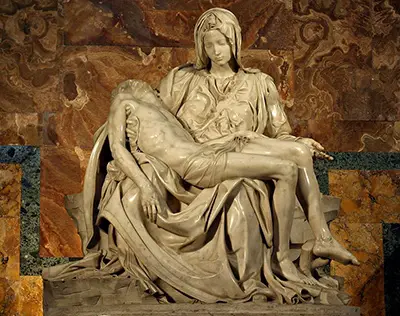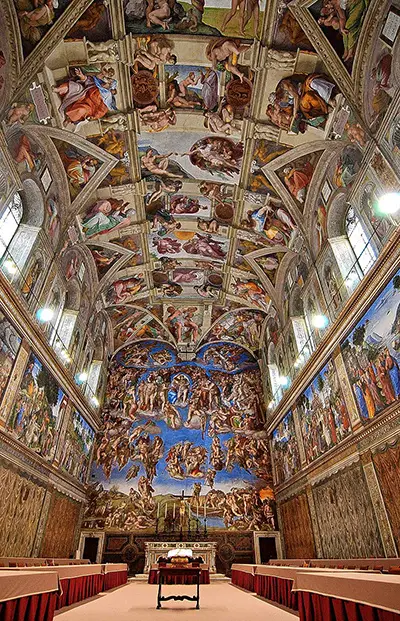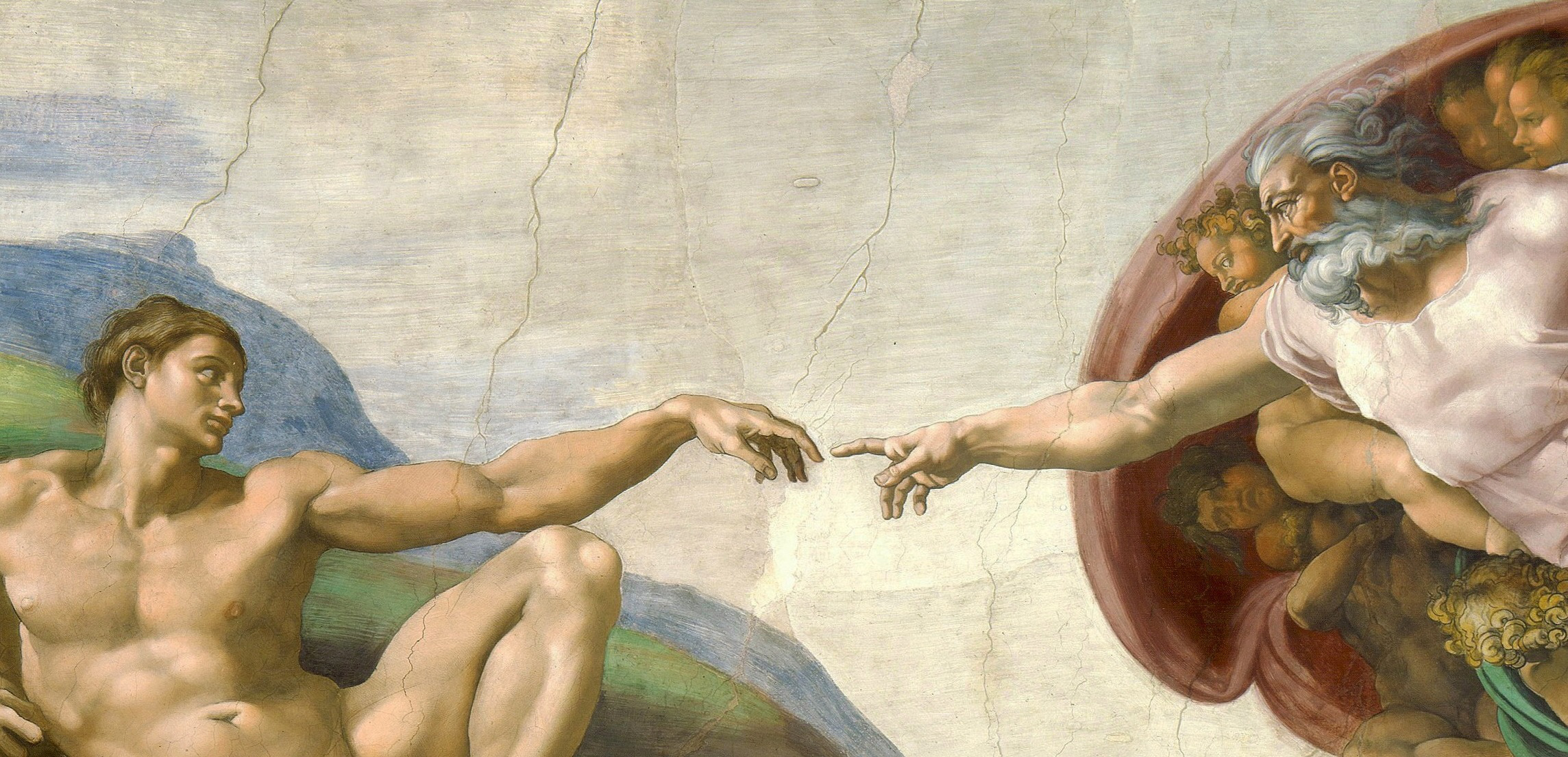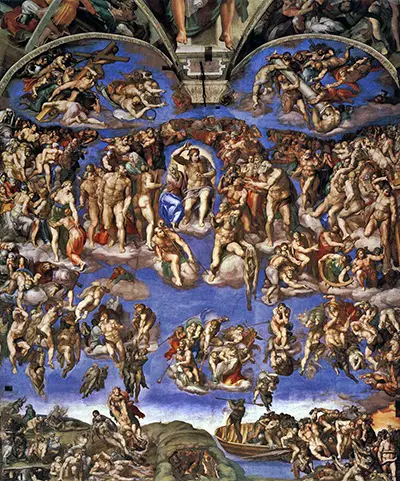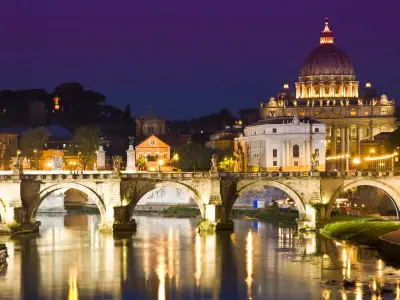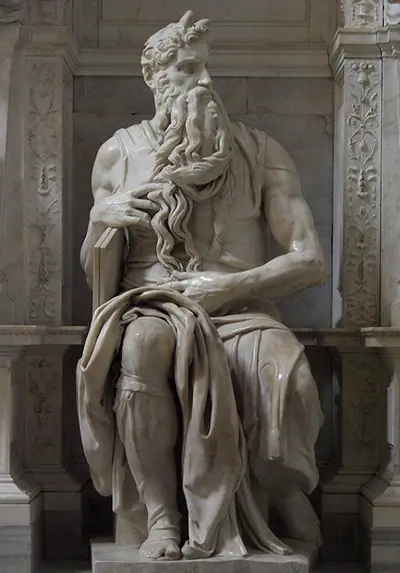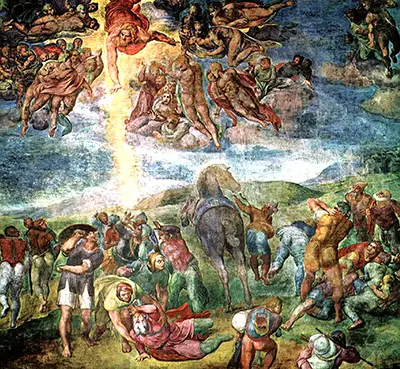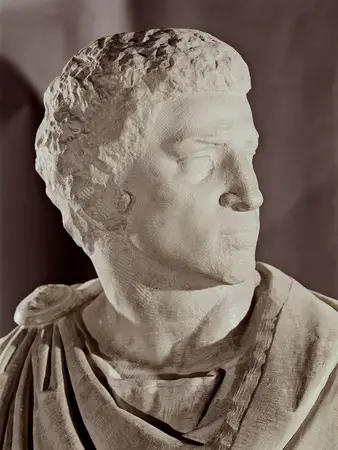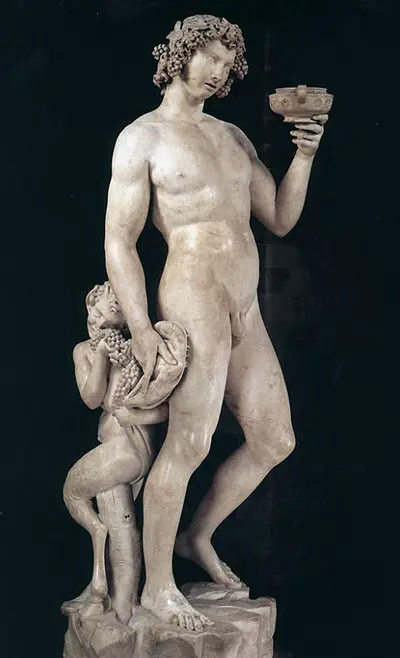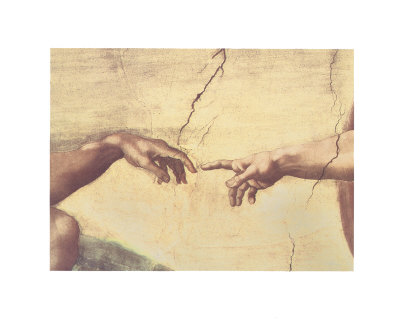Michelangelo.netへようこそ
ミケランジェロは、ヨーロッパ芸術の歴史の中で最も重要な絵画、彫刻、スケッチを生み、アーティストとしてのミケランジェロの重要性を過大評価することはできません。
この革新者は、仲間であるルネサンスマスター、レオナルド·ダ·ヴィンチ、今日アートの世界を私たちが楽しめるよう貢献した最も影響力のあるメンバー二人と共に並んでいます。
Michelangelo.netは、彼の人生や仕事をより詳細に知りたい方に、より多くの情報を提供できるよう、彼の生涯を少しずつハイライトですべてお見せすることを目指しています。
イタリアのミケランジェロの生涯をまだ知らない方のために、ホームページ内に有名な作品が数点ありますので、すぐに彼について知ることが出来ると思います。また、既に知っていると気付かれることと思います。現代のメディアには、ミケランジェロやレオナルド・ダ・ヴィンチのようなルネサンスの芸術家の作品に似ているものが多いです。
現代のメディアにおいて、これらの芸術家もまた、続く多くのアーティストに大きな影響を与えました。これらの影響は、古典的な作品独自のバージョンを作るように、大きなまたは小さな影響を与えているということは、明白です。
有名なミケランジェロの絵画、彫刻&素描
この特別な芸術家の経歴を紹介するため、続く各リンクをクリックし、情報満載のミケランジェロの生涯の要約をご覧下さい。私たちはまた、彼と関わりのあった多様なメディア、最も顕著な絵画、彫刻、素描に加え、発明についてもカバーし包括的に情報を提供できるよう試みてきました。このウェブサイトにあるギャラリーにて、すべての画像リストを見ることができます。
ミケランジェロの人生において関わりのあった分野には、彫刻、絵画/フレスコ画、素描/スケッチ、建築、発明と詩があります。
ダビデ像
ミケランジェロのダビデ像は、16世紀の非常に早い段階で出来、芸術の歴史内の彫刻の中で最も印象的な作品の一つと考えられています。
ダビデ像が完成するまでには3年ほどかかり、その後、同様に偉大な高みに到達するために続けていたキャリアの初期段階での重要点になりました。
この彫刻は重要な象徴的価値があり、イタリアと海外の競合状態におけるこの地域の不安定な地理的位置であったにも関わらず、その時のフィレンツェの強さと決意のリマインダーを務めていました。
ダビデの目は、フィレンツェがあらゆる攻撃から身を守るために警告として、ローマの方向を向いていると言われています。
この彫刻は、いくつかの異なる場所でも展示され、美術史において非常に貴重なものだったので、時折レプリカが展示されていました。これは、1991年の攻撃により本物に小さな損傷を与えてしまったためでもあります。
ピエタ
ピエタのテーマは、その時代の北欧起源にあり、フランス人枢機卿ジャン・ド・ビレールに製作依頼を受けました。
ヨーロッパ芸術傑作すべては、当初から信じられないほどの研究と議論がこれまでなされており、ピエタはその点に関して違いはありません。
ピエタに加え、その製作者ミケランジェロの重要性は、葬儀彫像として意図されていた場所が次第に変わっていき、そのため非常に良く保護されており、またより多くの人々に見て頂けるようになっています。
ミケランジェロは、多くの他のイタリア人芸術家が以前からしていたよう、作品の唯一のテーマとして死のテーマを避けるため、この作品で新たな方向でのキリストの外観を取ることを選びました。
このピエタのセクションでは、彫刻の芸術性を強調し、またその後行われた論争の議論すべてをカバーしています。
システィーナ礼拝堂天井画
システィーナ礼拝堂天井画には、歴史の中で最高級のヨーロッパ芸術がいくつか含まれています。
ミケランジェロは、ここで最も挑戦的な仕事を引き受け、完璧に共に作製していた複雑なフレスコ画のコレクションまとめました。
ミケランジェロによって完成した記念碑的作業は、16世紀の始めに5年以上に渡り、ミケランジェロのような評判と信頼のある芸術家を求めたプロジェクトのようなものでした。
右図の最後の審判が、祭壇の壁に描かれ、天井に置かれました。ミケランジェロは、数十年後、このフレスコ画を追加しました。
世界中から訪れるアートファンのため、システィーナ礼拝堂は、将来の世代のためにもその美しさを保護する大変な努力をしています。ルネサンス芸術は、ミケランジェロのような芸術家によって成し遂げられた成果を認識する新しい芸術家との関わりも続いています。
アダムの創造
アダムの創造は、システィーナ礼拝堂の見事な天井の中心となっています。
ミケランジェロは、一度に物議を証明したフレスコ画のこの精巧なシリーズを完成させるのに多くの年を費やしましたが、それ以来、美術史にとって重要な要素としてあり続けています。
この作品は、現代のメディアにおいて様々な方法すべてで再目的化されていますが、オリジナルは非常に最高の状態で、このシーンはシスティナ礼拝堂で発見された芸術すべてにおいての最も認識可能な作品です。
このアダムの創造の特別ページは、ここで見つかる明らかな象徴性を議論するのと同様、フレスコ画全体シリーズに入る絵画を強調しています。
The Last Judgement Painting
The Last Judgement was a fresco by Michelangelo which is in the Sistine Chapel, but came many years after his work on it's ceiling.
This artwork sits on the Altar Wall and has immense detail throughout, explaining why it is believed to have taken the artist around seven years in total to complete.
Our specific page devoted to The Last Judgement features greater information on the fresco as well as images which contain the entire piece, rather than just the main focal point which you can see included here.
An interesting element to this fresco was the way in which Michelangelo chose to portray Christ, which was not in keeping with how other artists had traditionally captured this religious icon. Later amendments were made, however, because of the scant nature appearance of the artist's main figures which was not entirely palatable to some members of the Vatican Church.
St Peter's Basilica
Michelangelo was one of several architects to have contributed to St Peter's Basilica.
St Peter's Basilica remains the most prestigious and artistically impressive piece of architecture that Michelangelo was ever to have worked on.
Michelangelo received the role of Capomaestro in 1547 and took on existing plans for the building, taking them through to a stage where development had begun and a good level of the foundations had already begun.
This ensured that Michelangelo's touches were to remain in the ongoing work of the building, even after his death. St Peter's Basilica is regarded by many as the finest piece of Renaissance Architecture from that entire period.
Moses
Moses was a full length sculpture created by Michelangelo in 1515.
The photograph to the right shows the top half of the artwork, and the incredible detail which the sculptor managed to produce.
The original sculpture remains in great condition and can be found at the San Pietro in Vincoli in Rome. Several Michelangelo sculptures have deteriorated over time but now receive the finest of care in order to best preserve all of his career that remains.
Pope Julius II requested artist Michelangelo to work on elements of his tomb, which was clearly a very high level commission to receive during that period of the Italian Papal States.
Moses was created in Marble, which was one of the artist's preferred mediums to work with. The tomb was to include this sculpture alongside many others in a truly elaborate layout which was befitting of the Pope's status.
Conversion of Saul
The Conversion of Saul is an inspiring fresco from 1545.
This fresco features a similar level of detail and activity to The Last Judgement and also The Crucifixion of St Peter, which was Michelangelo's very next artwork.
This artwork from Michelangelo can now be seen at the Cappella Paolina, Vatican Palace in Vatican City and is a typically huge fresco, around 6 metres wide by 6 metres tall. It is somewhat rare in the modern day to see artists produce such large paintings, but can still occur from time to time.
The scale of this work reflects the fact that it took around three years for Michelangelo to complete.
Brutus
The sculptured bust of Brutus was commissioned by Donato Gioanotti in 1538.
The importance of this piece cannot be overestimated when considering that it remains the only bust to be completed by Michelangelo, himself one of the finest sculptors in art history.
The stunning photograph to the right shows a closeup of the bust sculpture, with lighting providing shadows across the contours of the artwork, indicating where Michelangelo went deepest into the marble.
It is believed by many that Michelangelo used Brutus as a way of indicating his displeasure with the ruling powers of Florence at the time, but without being so blatant as to get himself into trouble. In using this figure as a representation of freedom and justice, he was directly commenting against those who he felt opposed these ideals.
Michelangelo's choice of subjects for his sculptures and frescos can almost be a lesson in history in itself.
Bacchus
Bacchus is a marble sculpture which came around in 1497 and took around a year to complete.
Sculptor Michelangelo attempts to portray the well known Roman God as being drunk, and is another example of how ths artist liked to tackle common topics with his own perspective.
This sculpture is another example of how Michelangelo was adept at capturing the human body so beautifully and technically correctly in his sculptures.
David is another obvious example alongside Bacchus of his technical ability to sculpture the physical body with style and precision.
Michelangelo Artwork
The detailed photograph of The Creation of Adam is currently the most popular Michelangelo artwork chosen for reproduction.
There are, however, many others to choose from in the gallery which is linked to from this website. Photographs of his sculptures are also very popular choices, as well as detailed photographs of other elements of the Sistine Chapel.
Michelangelo and Leonardo da Vinci artworks remain the most reproduced of all original art from the Renaissance era, which reflects their importance as artists, but in recent years there has also been a growing interest in modern modern artists and movements, such as Romanticism, Abstract Expressionism and Post Impressionism.
Michelangelo Blog
The blog offers the latest information related to the artist, such as new exhibitions across Europe, America and the rest of the World. There may also be other information such as Michelangelo Tours to see some of his finest work in all it's glory as well as other items in the media which concentrate on the incredible legacy left by Michelangelo. You can find the Michelangelo blog here.
Despite this artist's life being many centuries ago, there is still news items on him across the media on a weekly basis and the blog will try to syndicate this as much as possible to provide further resource for those wishing to learn more about the great man.
Michelangelo Biography
Our Biography offers an excellent summary of the key moments in the life of artist Michelangelo, covering his birth and childhood, distinguished career and everything else up to his death many years later. Students plus anyone else looking to quickly understand more about him would be advised to check this out first before looking through the other areas of the website afterwards.
You can find the Michelangelo biography here, and it is organised by year and decade.
Michelangelo Sculptures
Michelangelo produced a wealth of sculptures during his lifetime, making it his signature art medium, even ahead of the frescos from the Sistine Chapel and some of the architectural plans which were used for buildings still standing today. Beyond the best known works such as Pieta and David, there are many alternative sculptures to enjoy with in this section of the website which covers this particular medium in full, aiming to provide a full summary of the artist's catalogue of sculptured art.
You can find out more about Michelangelo sculptures here, with each work presented with key information and resources to learn more about each one.
Michelangelo Paintings/Frescos
Michelangelo paintings included the ceiling of the Sistine Chapel, which remains one of his biggest career highlights. The level of detail across this work was extraordinary and individual elements of it are considered masterpieces in their own right, such as The Creation of Adam which was one of the centerpieces of the overall piece.
Michelangelo was to later return, several decades later, on a new commission in the Sistine Chapel which was to be The Last Judgement fresco which lifted the artistic qualities of this location even higher. Several more years of his life were spent working on this piece after the new commission had been agreed.
Michelangelo Drawings/Sketches
Michelangelo drawings and sketches provided the basis for so much of the artist's career, be it study pieces for upcoming frescos, outlines for new inventions or architectural plans. Recent focus has been drawn on his substantial natural drawing skills with many exhibitions covering this element of his career alone.
Original sketches without further work show us the raw talent of the artist through sketched detail in portraits, buildings and anatomical studies. Most Renaissance followers will find a lot to their tastes with in the career of Michelangelo, and his influence on later artists across many artistic media cannot be denied.
Michelangelo Architecture
The most notable architectural commission for Michelangelo was to complete work on St Peter's Basilica. Several key artists devoted years of their life to completing this project and pushing the work of previous designers ever onwards. Several other key architectural plans produced by Michelangelo were sadly not to be realised but enough were that he can be considered a highly significant Renaissance Architect.
You can find out more about Michelangelo architecture here, including architectural drawings and further detail on the specific projects in which he was to become involved.
Michelangelo Inventions
Michelangelo was not an inventor in quite the same way as Leonardo da Vinci but he did produce many significant drawings based on new and developing products, many of which were to come to fluition. Invariably, the artist was to be commissioned to help out with the artistic side of new machines but he is not known to have actually come up with the original ideas himself.
You can find out more about the topic of Michelangelo inventions here, which tend to be detailed drawings illustrating several complex machines and products of that era.
Michelangelo Poetry
Literature, particularly poetry, was another significant area of interest for Michelangelo. The Renaissance movement itself included many valuable contributions to Literature and marked important developments in this artistic category.
There is information on Michelangelo poetry here, and this includes a focus on around ten of his best known literary contributions. Whilst the artist remains best known for his sculptures and frescos, poetry was another impressive string to his bow.
Further Artists
For those with a mixture of tastes in art, you may find some of our other resources also worth checking out. For example, you can learn about Mark Rothko at www.mark-rothko.com. This American artist provides an abstract approach which clearly differs greatily from the Renaissance frescos of Michelangelo as featured in this website.



